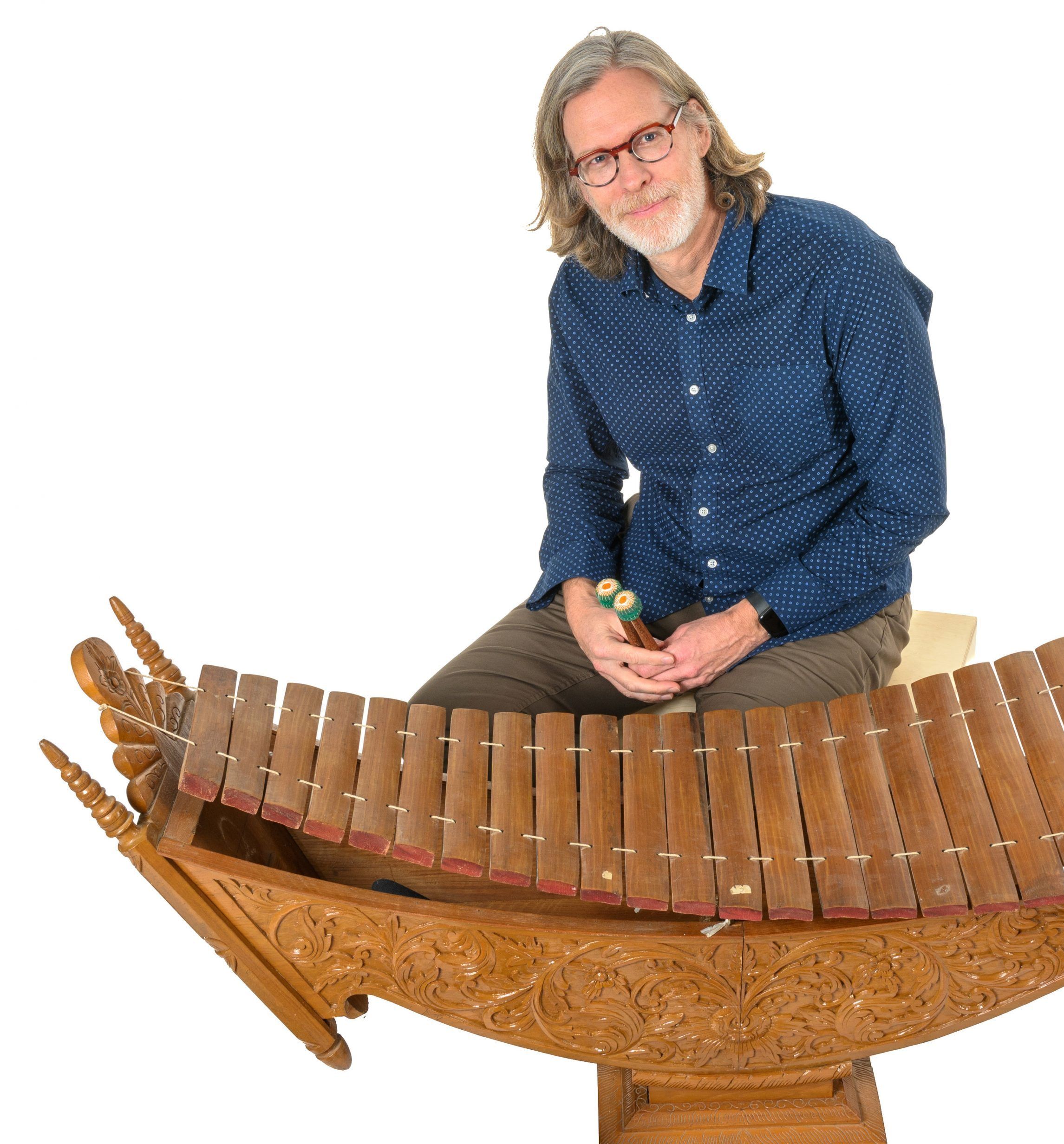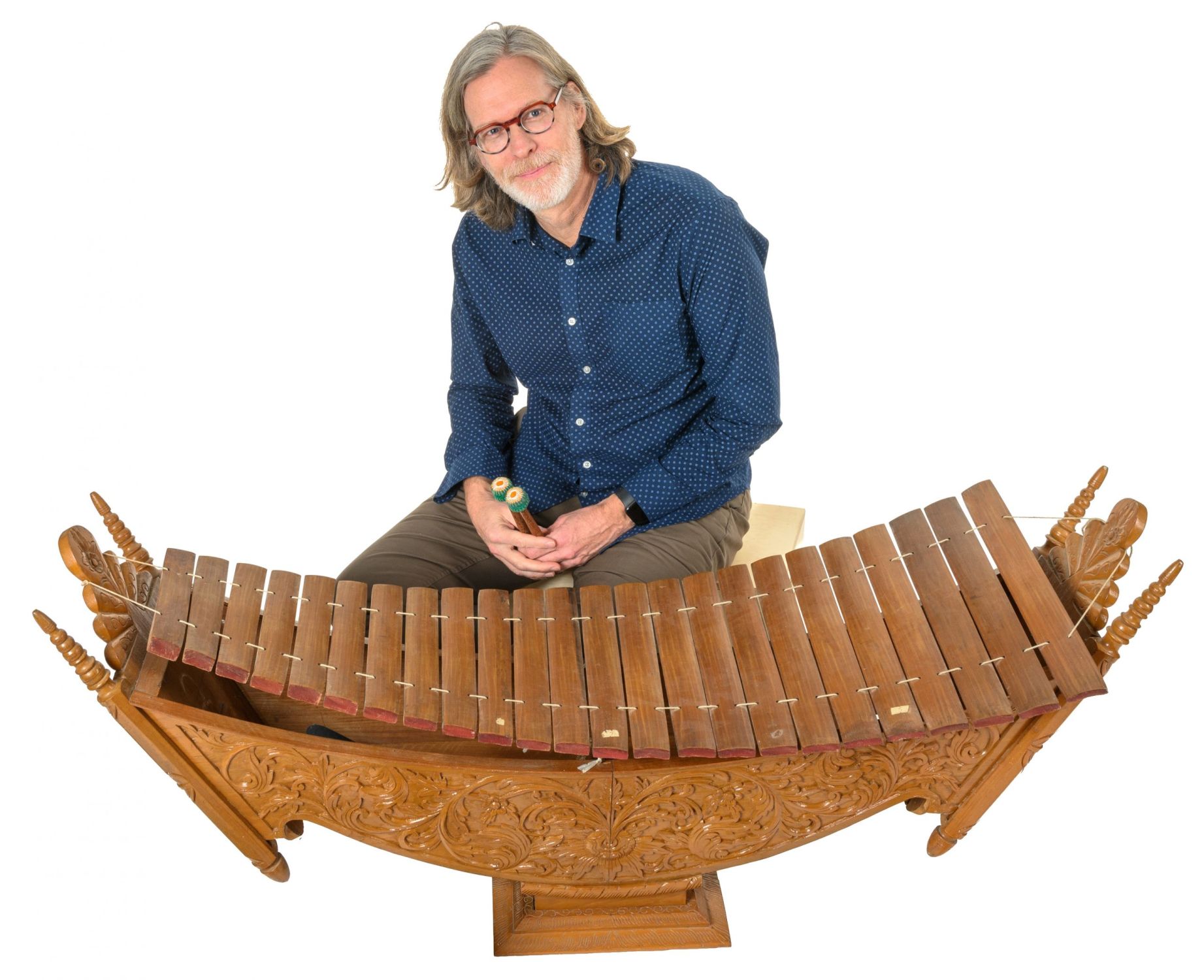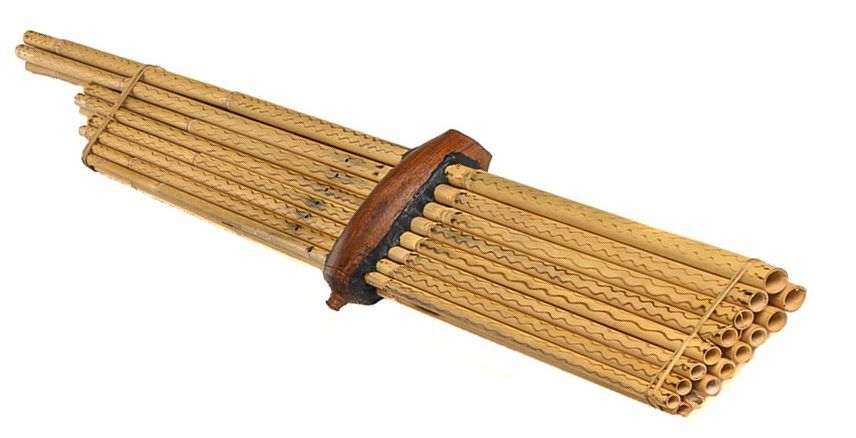

“What does a White college professor, born in Canada and living in North Carolina, have to say about Southeast Asia?” asks Dr. Gavin Douglas with a wry laugh.
Quite a bit, it turns out. The ethnomusicology professor in the School of Music is the author of Oxford University Press’ “Music in Mainland Southeast Asia: Experiencing Music, Expressing Culture.” He also has over 20 peer-reviewed publications in the field, with a particular focus on Myanmar, also known as Burma, and Buddhist music.
In 2019, Douglas’ resumé and research caught the attention of a big name in Hollywood.
“Out of the blue, I got this email from Disney, asking if I would act as a music consultant for their next film, ‘Raya and the Last Dragon.’ I imagine I got tapped because I’d done work over a span of several years and many countries in the region – Myanmar, Thailand, Cambodia, and Vietnam. The film takes place in this mythical Southeast Asian-inspired place. It’s a corner of the world that Disney hadn’t yet explored.”
Douglas first visited Myanmar as an ethnomusicology doctoral student. “Ethnomusicology is anthropology and music combined – trying to understand music within a cultural context. As a guitarist I both taught lessons there and took them with senior masters. Those lessons helped me develop relationships. I was invited into homes, had meals, met families, and listened to stories.”
He returns every few years for more field work.
“I’m interested in how sound and music are tools that people use to navigate their identities,” he says. “For example, chants and bells can cultivate certain mental practices in Buddhism, but those sounds also articulate different ways of belonging to a Buddhist community. My work explores power relations between different ethnic and religious groups and how sound is used to establish or push against different identities.”
When movie production was beginning, Disney put together what they called the “Southeast Asian Story Trust,” a group of consultants on everything: food, textiles, architecture, language, martial arts, dance, and other cultural representations.
Douglas helped composers bring regional sounds to what was largely a big orchestral, Western-style score. He started out by submitting lists of instruments and audio files. Because the story takes place in a mythical place, it was important the sound be broadly representative.
“I told them about things that might be hot buttons and helped make sure the sound wasn’t too localized or connected to a specific religious tradition. Disney sent me early drafts of the film, and I went through them second by second, listening for what might sound too outside of the region, like too Chinese or too Japanese. I listened to make sure the sounds matched up with the locations like a city, a tea shop, the palace, an open market. It was a study of sounds in the environment, of sounds that cue a certain place. That was fun to do.”
“One of my critiques of ‘Raya’ is it should have more mallet xylophone-like sounds, like those made by this pattala. Variants of the pattala are found throughout Southeast Asia.
“I spent time learning from a pattala maker in Burma, and he created this one. It has a teak frame with bamboo slats that are carved underneath – in the middle to create higher tones and on the sides for lower tones. You can actually whittle between songs to adjust tuning. Other xylophones in the region use melted metal filings or beeswax to weight the keys for tuning.”

“The khen, made of bamboo and a gourd, is like a large harmonica. This one is from Laos, but there are variants throughout Southeast Asia. It’s a very distinct sound that should have but didn’t make it into ‘Raya.’ You do see a character playing one in the credits.”

“The phin is an Isan instrument from where rural, highland Thailand meets Laos. While the phin is more a Laotian instrument, a 1970s rural workers revolution in Thailand became associated with this northeast country sound, and today the phin is used in Thai country music.”
Douglas finally got to meet the other consultants, most from Southeast Asia, in a virtual gathering after a screening of the final product.
“Consultants were dialing in from places like Thailand, Malaysia, and Indonesia. It was so great to be together and hear them sharing their reactions to the film, saying things like ‘I recognize that soup in the café scene,’ or ‘The shape of that textile on the costume was perfect,’ or ‘The martial arts scenes were exactly like what I remember my grandfather doing.’ People were delighted to see elements of their cultures represented.”
Douglas is using the experience as a springboard in his music and anthropology classrooms. “Discussing the movie opens up a conversation about sound as representation, about mediated representations of different cultures, and about the power dynamics involved. Disney certainly didn’t take all my advice. For example, some singing styles found in Southeast Asia, while more representative, are arguably not as palatable to Western ticket buyers.”
The experience was stimulating, he says. “The project was full of difficult issues concerning cultural representation, but it’s one of the best films Disney has done along these lines. We can rightly critique corporate entertainment, but when you have a chance to participate, then that should be an opportunity to facilitate change.”